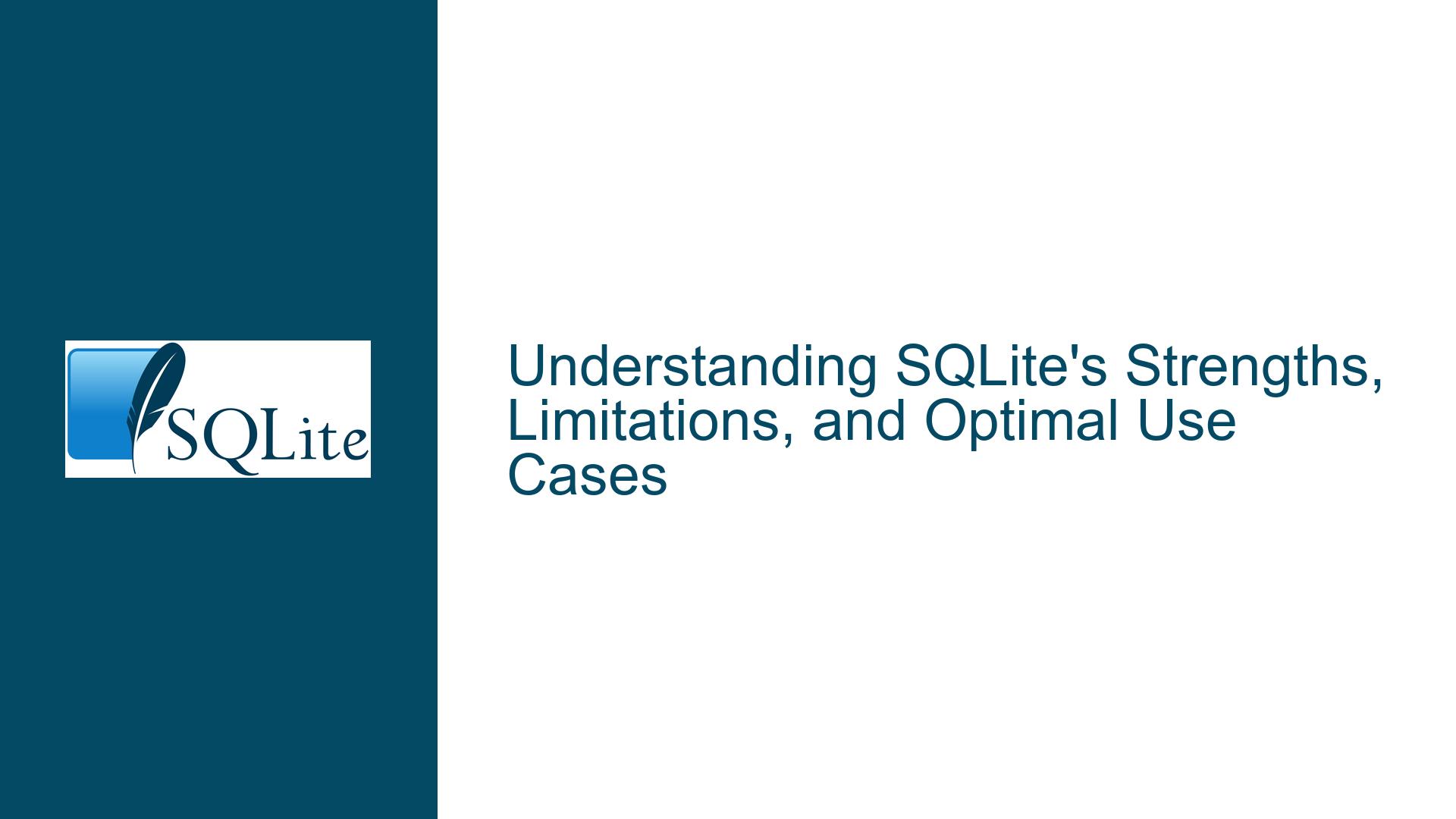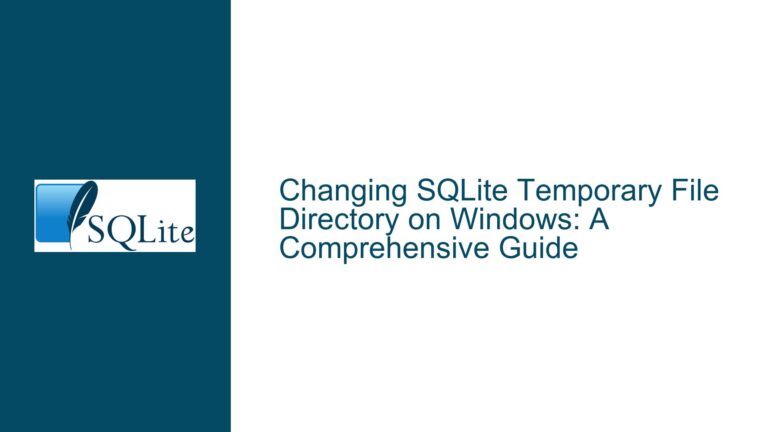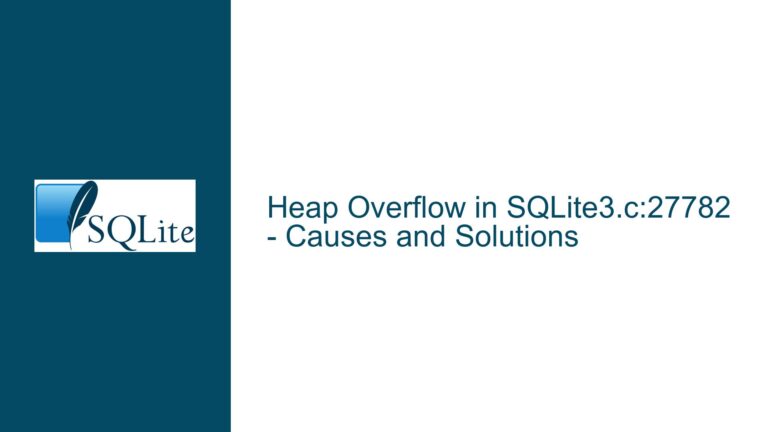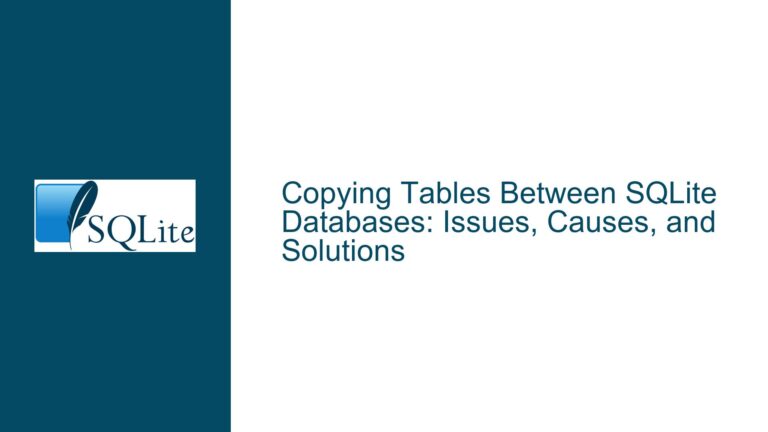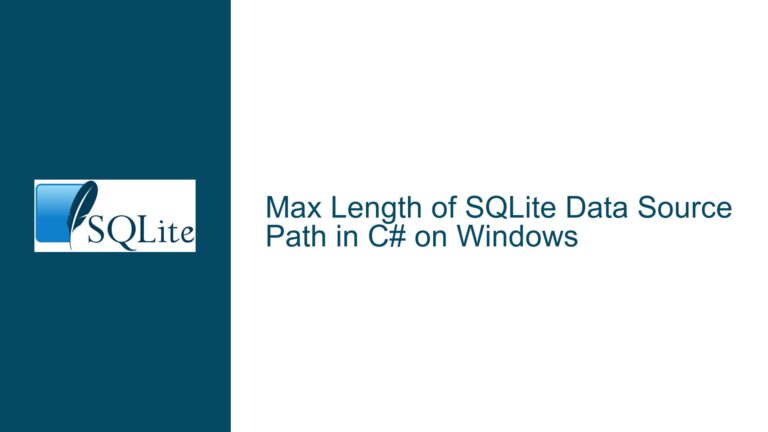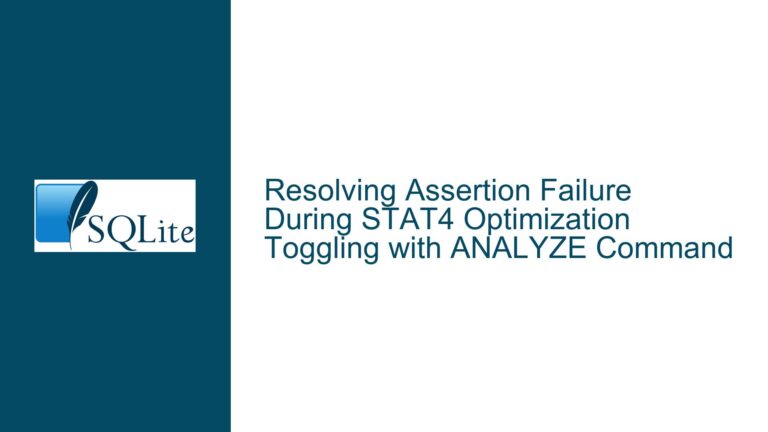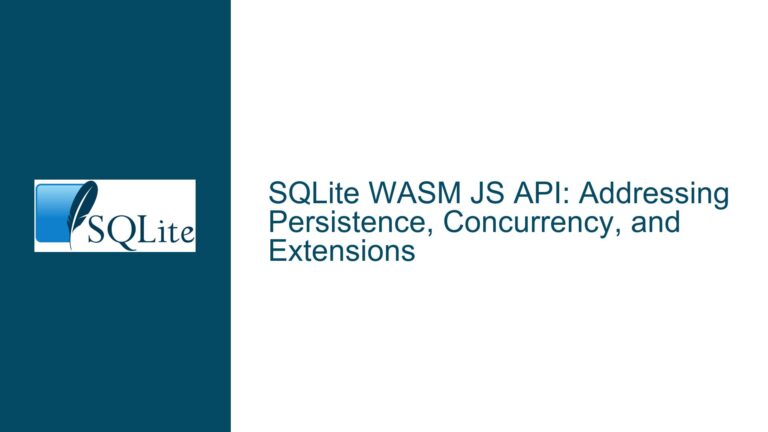SQLite’s Strengths, Limitations, and Optimal Use Cases
SQLite’s Architecture and Its Implications for Application Design
SQLite is a lightweight, serverless, self-contained SQL database engine that is widely praised for its simplicity, speed, and ease of use. Unlike client-server databases such as PostgreSQL or MySQL, SQLite operates directly on disk files, eliminating the need for a separate server process. This architecture makes SQLite exceptionally fast for single-machine operations, as it avoids the overhead of inter-process communication and network latency. However, this design also imposes certain limitations, particularly in scenarios requiring high concurrency or distributed access.
The core of SQLite’s architecture lies in its ability to handle transactions and locking at the database level, rather than at the row or table level. This means that when a write operation is performed, the entire database is locked, preventing other write operations from occurring simultaneously. While this approach simplifies the implementation and ensures data integrity, it can become a bottleneck in applications requiring fine-grained locking or high levels of concurrency. For example, in a multi-user environment where multiple clients need to write to the database simultaneously, SQLite’s locking mechanism can lead to contention and reduced performance.
Another key aspect of SQLite’s architecture is its reliance on the local file system for storage. This makes it ideal for applications that run on a single machine, such as mobile apps, desktop applications, or embedded systems. However, it also means that SQLite is not well-suited for distributed systems where the database needs to be accessed by multiple machines over a network. In such cases, client-server databases, which are designed to handle remote connections and distributed transactions, are more appropriate.
Understanding these architectural nuances is crucial for determining whether SQLite is the right choice for a given application. While SQLite excels in scenarios where simplicity, speed, and low resource consumption are paramount, it may not be the best fit for applications requiring high concurrency, distributed access, or fine-grained locking. By carefully evaluating the specific requirements of your application, you can make an informed decision about whether SQLite is the right database engine for your needs.
The Role of Locking Mechanisms in SQLite’s Performance and Scalability
One of the most significant factors influencing SQLite’s performance and scalability is its locking mechanism. SQLite employs a file-based locking system to manage concurrent access to the database. When a write operation is initiated, SQLite acquires an exclusive lock on the entire database file, preventing other processes from performing write operations until the lock is released. This approach ensures data consistency and integrity but can lead to performance bottlenecks in high-concurrency environments.
In contrast, client-server databases typically implement row-level or table-level locking, allowing multiple clients to write to different parts of the database simultaneously. This fine-grained locking mechanism enables higher levels of concurrency and better performance in multi-user environments. However, it also introduces additional complexity, as the database must manage and resolve potential conflicts between concurrent transactions.
SQLite’s locking mechanism is particularly well-suited for applications with low to moderate levels of concurrency, such as single-user desktop applications or mobile apps. In these scenarios, the simplicity and efficiency of SQLite’s locking system can provide significant performance benefits. However, in applications requiring high levels of concurrency, such as web servers or multi-user enterprise systems, the limitations of SQLite’s locking mechanism can become a critical issue.
To mitigate these limitations, SQLite provides several features and techniques that can help improve concurrency and performance. For example, the Write-Ahead Logging (WAL) mode allows multiple readers to access the database simultaneously while a single writer is active. This can significantly reduce contention and improve performance in read-heavy applications. Additionally, SQLite’s support for transactions enables developers to group multiple operations into a single atomic unit, reducing the frequency of lock acquisitions and releases.
Despite these optimizations, SQLite’s locking mechanism remains a fundamental limitation in high-concurrency environments. Developers must carefully consider the concurrency requirements of their application and evaluate whether SQLite’s locking model is compatible with their needs. In cases where high concurrency is a critical requirement, alternative database systems with more advanced locking mechanisms may be more appropriate.
Evaluating SQLite’s Suitability for Different Application Scenarios
SQLite’s unique architecture and locking mechanism make it an excellent choice for a wide range of applications, but it is not a one-size-fits-all solution. To determine whether SQLite is the right database engine for your application, it is essential to evaluate the specific requirements and constraints of your use case.
For single-machine applications, such as mobile apps, desktop software, or embedded systems, SQLite is often the ideal choice. Its serverless design and low resource consumption make it easy to integrate into these environments, while its simplicity and speed ensure optimal performance. Additionally, SQLite’s support for ACID transactions and its robust data integrity features make it a reliable choice for applications that require consistent and accurate data storage.
In contrast, for applications requiring high levels of concurrency or distributed access, SQLite may not be the best fit. Multi-user web applications, for example, often require fine-grained locking and the ability to handle multiple simultaneous write operations. In these scenarios, client-server databases such as PostgreSQL or MySQL are typically more suitable, as they are designed to handle the complexities of high-concurrency environments.
Another important consideration is the scalability of your application. While SQLite can handle large datasets and complex queries, its performance may degrade as the size of the database grows or the number of concurrent users increases. For applications that are expected to scale significantly over time, it may be necessary to consider alternative database systems that are designed for scalability and distributed access.
Finally, it is important to consider the development and maintenance overhead associated with different database systems. SQLite’s simplicity and ease of use can significantly reduce the time and effort required to develop and maintain your application. However, if your application requires advanced features such as stored procedures, triggers, or complex query optimization, you may need to invest additional resources in configuring and managing a more complex database system.
In conclusion, SQLite is a powerful and versatile database engine that is well-suited for a wide range of applications. However, its suitability depends on the specific requirements and constraints of your use case. By carefully evaluating the concurrency, scalability, and development overhead of your application, you can make an informed decision about whether SQLite is the right choice for your needs.
